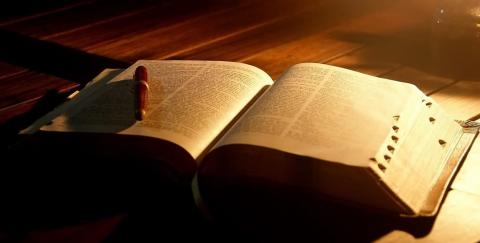The Bread

April 9, 2022
Now as they were eating, Jesus took bread, and after blessing it broke it and gave it to the disciples, and said, “Take, eat; this is My body which is given for you. Do this in remembrance of Me” (Matthew 26:26; Mark 14:22; Luke 22:19; 1 Corinthians 11:23-24).
There is a marked difference in the way Passover was celebrated in the days of Jesus, and the way it is celebrated today. In the days of Jesus, the Passover meal included ritual (blessed) wine and non-ritual wine, bitter herbs (usually bitter lettuce or celery dipped in salt water/vinegar), unleavened bread, roasted lamb, vegetables, and charoseth (a paste made of crushed apples, pomegranates, figs, walnuts, grapes, dates, saffron, and wine). In the modern Passover the Jews have added gefilte fish, a boiled egg, and a bare lamb shank bone. All elements of the ‘Seder’ (Passover meal) have historical meaning regarding the experience of the Jews in slavery and in exodus. All of the elements also have symbolic meaning pointing to Jesus the Messiah. While the Jews reject the symbolism regarding the Messiah, anyone who compares the meaning of the elements with the suffering and death of Jesus can see clearly the relationship between the two.
Now as they were eating the Passover meal, Jesus introduced His ‘memorial’ observance - the Lord’s Supper. Only two elements are involved in this observance: unleavened bread and wine. We will focus on the significance of the unleavened bread.
Scripture says the Israelites were to eat only unleavened bread every year during Passover as a commemoration of the Exodus from Egypt. Since the children of Israel left Egypt quickly, they did not have time for bread to rise, so it was made on that very first Passover without leaven (yeast). You shall eat no leavened bread with it; seven days you shall eat unleavened bread with it, that is, the bread of affliction (for you came out of the land of Egypt in haste), that you may remember the day in which you came out of the land of Egypt all the days of your life (Deuteronomy 16:3; ref. Exodus 12:8; 29:2; Numbers 9:11).
In the Bible, leaven is almost always symbolic of sin. As leaven affects the whole lump of bread dough, sin also affects the whole person, church, and nation, eventually corrupting the sinner and leading to death (Galatians 5:9). So, how does the unleavened bread point to Jesus? Jesus did not have a sin nature; He lived a sinless life. He was completely holy in nature and character, and righteous and just in conduct. (1 Corinthians 5:7) Therefore purge out the old leaven, that you may be a new lump, since you truly are unleavened. For indeed Christ, our Passover, was sacrificed for us. (Hebrews 7:26) For such a High Priest was fitting for us, who is holy, harmless, undefiled, separate from sinners, and has become higher than the heavens . . . . (1 Peter 2:21-22) For to this you were called, because Christ also suffered for us, leaving us an example, that you should follow His steps: “Who committed no sin, nor was deceit found in His mouth” . . . . (1 John 3:4-5) Whoever commits sin also commits lawlessness, and sin is lawlessness. And you know that He was manifested to take away our sins, and in Him there is no sin. As such, He was the perfect sacrifice for sin because He was ‘spotless and without blemish’ (without sin) as the Law of God required for the sin offering (Leviticus 4:32; 1 Peter 1:19). Amen.
Pastor
